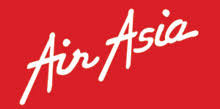If a plot of land is given to a group of monkeys, irrespective of where the land is, the chances are it would be left unattended and could eventually turn into little jungle. In fact, the jungle would be a natural place for monkeys to live.
The same plot of land in the hands of smart executives would certainly be transformed into sources of economic activities. It could be used for commercial plantations or be developed into housing estates and commercial centres. Millions could be made out of it.
From the above example, it is obvious that people drive value creation, be it the public or private sector. It is the quality of people in any organisation that determines its effectiveness and how successful it would be.
Generally, assets to corporations are those which will bring future economic benefits that would eventually contribute, directly or indirectly, to the cash flow of those corporations. Given that the drivers of value, hence economic benefits, in organisations are people, wouldn’t it be sensible for people to be recognised on balance sheets of corporations? The answer could be quite tricky.
In the United Kingdom, for example, soccer teams incur huge amounts of cost in transfer fees to obtain the service of good players. The transfer fee is classified as an intangible asset, and accounted for according to the financial reporting framework applicable to the clubs. In such cases, we could see some sort of value attached to the people who generate excitement on the soccer field, eventually earning money for the clubs through tickets, merchandise and television rights.
However, in most other cases, people are hired on contract of employment, and the salary and other benefits paid are charged as expenses. If the person is senior enough in the organisation (such as directors), the benefits paid would be disclosed in the financial statements. Other than that, there would not be much disclosure about the people in the organisation.
Even the cost of training provided — which should enhance the future benefits of the corporation through better future performance — is charged out as expenses. This is understandable, as it would be difficult to quantify how much better the person would be and how much more benefits he or she could bring in.
The present issue about executive compensation, particularly through huge performance bonuses adds complexity to the challenge of how people in organisations should be appreciated. Although the thought behind such huge bonuses is rewarding performance, the outcome of such a practice to a number of big institutions, particularly in the developed world, which applied this idea blindly, was catastrophic.
Risky transactions were pursued to lock in profits which were the basis of the payouts. When some of the deals turned south, the institutions were caught with huge losses while the employees were insulated from the risks. Most corporations are now rethinking on the compensation models to ensure sustainable business.
The reverse is when rewards are made without distinction between the performers and non-performers. While this observation could be a simplistic view, the way bonuses are paid to the employees in the public sector in Malaysia seems to be as such. When a bonus payment is announced, normally during the budget speech, the allocation of bonuses would be based on the category of seniority or a minimum sum for those in the low-income bracket.
Any additional income would certainly be welcomed by employees, but whether such practice encourages people to perform would be something else. Perhaps with the introduction of Key Results Area and Key Performance Indicators in the public sector, bonuses for civil servants would reflect more on their performance and less as an entitlement.
Another important element which relates to people is integrity and honesty. Without doubt, huge amounts of resources could be saved if people are not involved in corrupt practices and perform their work diligently. At this moment, there is no indicator in practice that could measure the level of integrity and honesty in the workplace. We may never be able to do so but how could we improve if there is no sense of how people behave on the ground?
As countries and corporations compete for talents, the need to ensure people in organisations perform their roles and functions in the best interests of the organisations they work for is getting more critical. While the human resource practitioners continue to find innovative ways to make this happen, the ways to communicate the potentials of people in organisations need to be further explored.
We may not be able to translate this into ringgit and sen, but some sort of indicator of potentials would be good when corporations are assessed on their potential performance.
So, when you praise a person that he or she is a credit to the organisation, be careful. You may be indicating that he or she is a liability!




